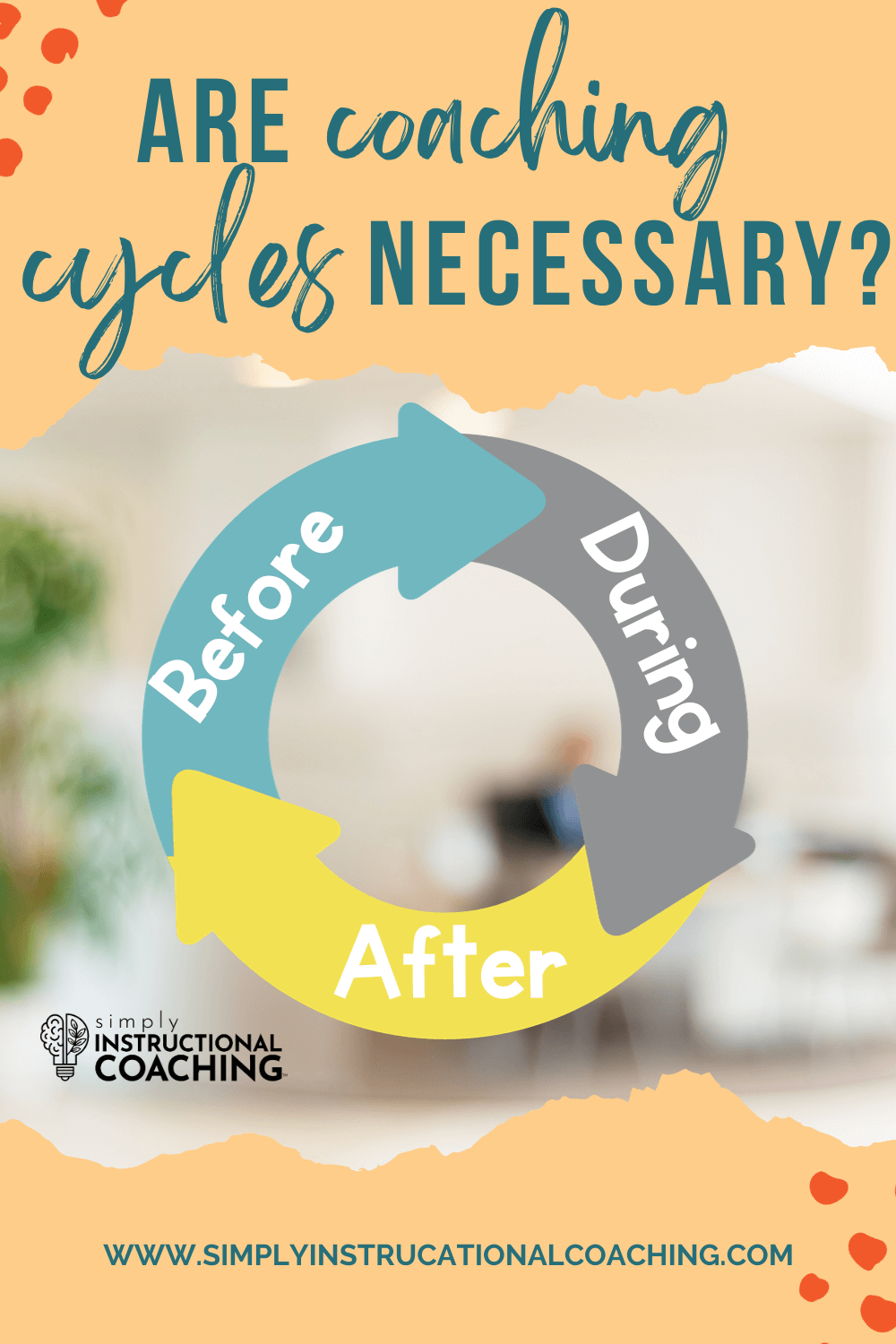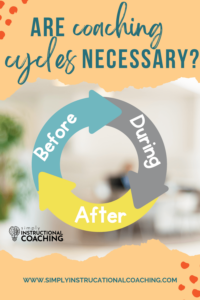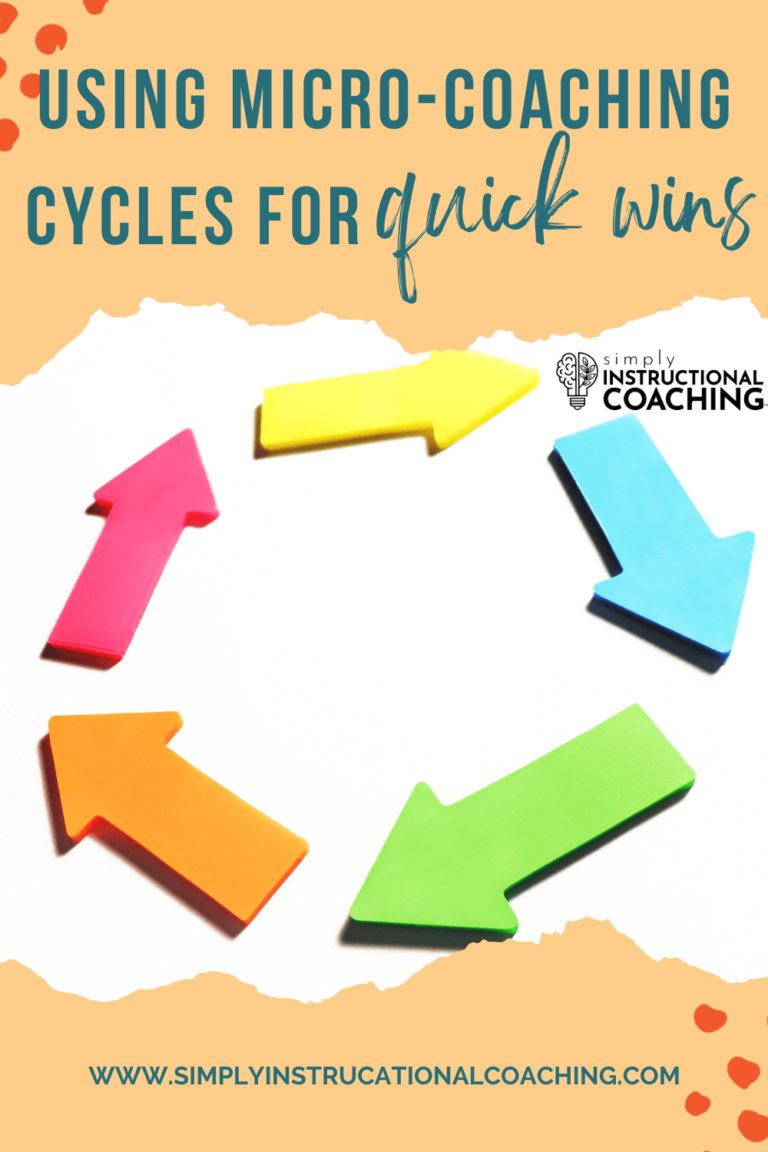
The Coaching Cycle: An Essential All Year
School is back in session and while you’ve hopefully spent this week planning out the rest of the year, it is now time to jump right back into the coaching cycle! People often ask if coaching cycles are necessary as we go into the second semester. The answer is YES! Why is a coaching cycle essential all year and what does it look like?
Look no further for a nice refresher.

Why the Coaching Cycle Essential?
The Coaching Cycle is a vital part of instructional coaching because it helps keep everything organized. When you have a cycle that you follow, more gets accomplished and your teachers get the feedback and resources that they need.
The coaching cycle is a way to keep track of your work and can be a form of professional development. When you work with a teacher, the coaching cycle helps become more effective and definitely with a clear purpose. We use the term “cycle” because you follow several different cycles throughout the process. This cycle has a before, during, and after a period which consists of observation, setting goals, observing, feedback, and implementing an action plan.
Let’s look at the components a little closer…
The Observation
An observation is simply that: observing. When you go into a teacher’s classroom, you will observe what happens and then talk to the teacher about what you saw with no interpretations. When you have your observation meeting, you can ask questions for clarification. Overall, this observation is for you to get a general feel for what the teacher’s classroom is like and to get an idea what you can work on as a team.
Set a Goal
After you have observed in the classroom, you can sit down with your teacher and come up with a goal. This goal should be specific and manageable and can be about teaching strategies or classroom management. Once the goal is set, you need to decide how the teacher is going to implement the goal by coming up with an action plan.
Action Plan
An action plan tells the teacher what the steps are for them to improve upon his/her goal. In this step, you will bring out a variety of resources that will help the teacher reach the goal you set as a team. When you are going through the action steps, you may want to practice with the teacher by demonstrating the strategies that you have laid out for them.
Implementing
Once the goal is set and you have practiced with your teacher, your teacher can start implementing the action steps in the classroom. When the teacher does this, you should observe what the class and take careful notes.
Feedback
No matter what kind of observation you do whether it’s a walk-through or a formal observation, you should always make sure you give your teacher feedback. This feedback can be in the form of a note or in a full-on meeting. All of your initial feedback should be done in a meeting like setting.
The effect of the coaching cycle
If you follow all of the steps above and fill out the proper paperwork, you will not only have managed your time very well, you will also see that your teacher’s goals have been met in a more timely fashion. It can be difficult to work towards a goal if there is no structure to work with and the coaching cycle offers that.
For more about the coaching cycle and other instructional coaching tips, you can check out Simply Instructional Coaching: Questions Asked and Answered from the Field book on Amazon or on the immediate download on TpT!

